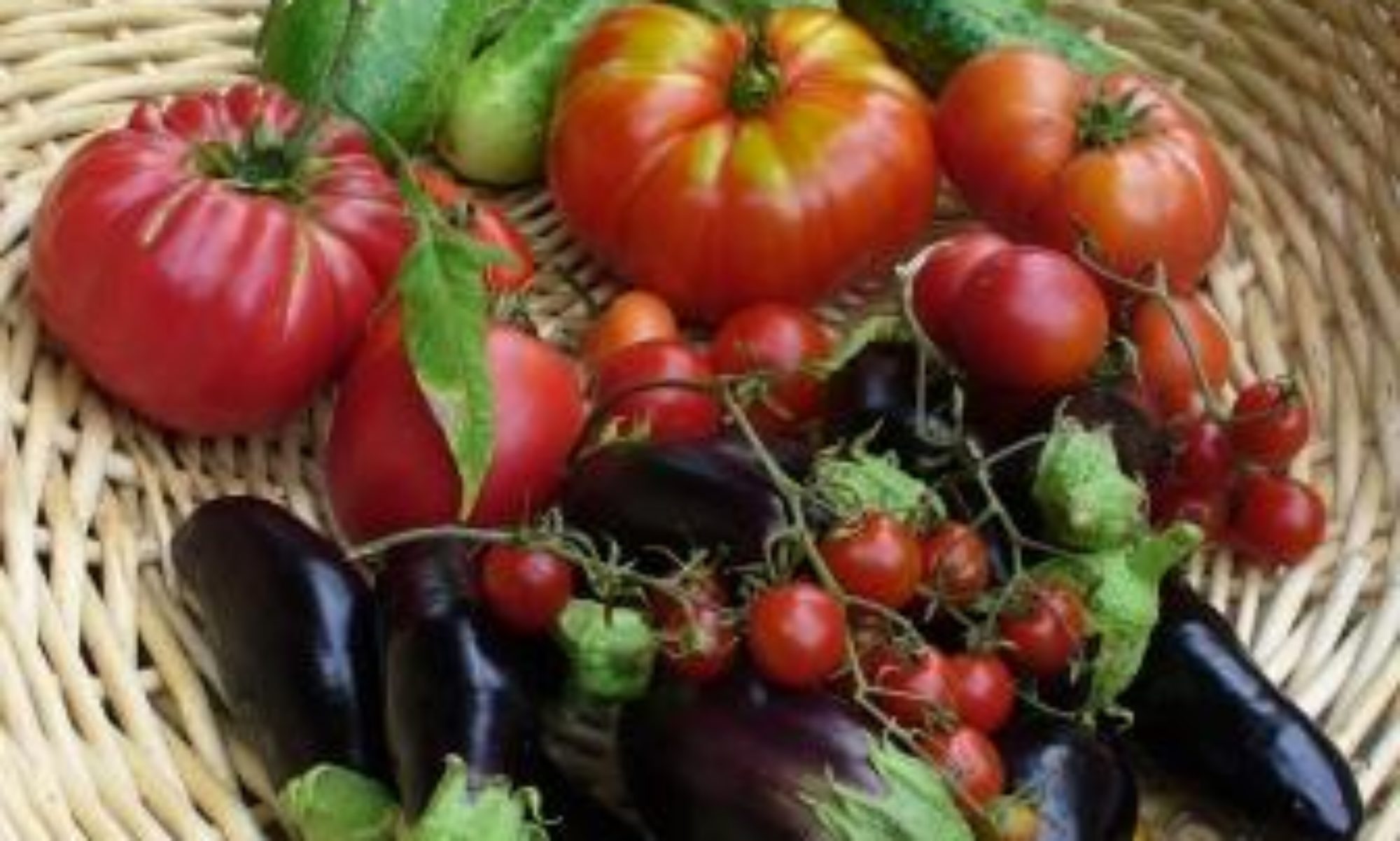
When my pea crops stopped producing, I allowed those pods that had become to mature to dry on the vine. When shelled, this yielded 3 lbs of snow pea seeds and 2 lbs of shelling pea seeds. I will use these to produce microgreen pea shoots over the winter. This amount of seeds purchased commercially would cost $80-$100 including shipping.



 The first tomatoes are finally ripening in my high tunnel. This is Slava, a dependably early variety.
The first tomatoes are finally ripening in my high tunnel. This is Slava, a dependably early variety.

 The first fruit to ripen this year are Washington Cherry (left) and Bloody Butcher.
The first fruit to ripen this year are Washington Cherry (left) and Bloody Butcher. Tomatoes and melons in our new high tunnel are thriving with many green fruit on both and the first early tomatoes beginning to ripen. A few tomato varieties, such as Debarao have 7′ tall vines.
Tomatoes and melons in our new high tunnel are thriving with many green fruit on both and the first early tomatoes beginning to ripen. A few tomato varieties, such as Debarao have 7′ tall vines.